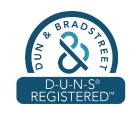In a recent article published by the Financial Times, there are now more exchange-traded funds (4,370) than individual stocks (4,172) listed on U.S exchanges.
That’s a staggering amount of choice.
Replicate that, the world over, and investing can sometimes feel rather complicated.
There are thousands of stocks, bonds, and funds to choose from, and everyone seems to have a different opinion. They throw around complex terms like “alpha” and “beta” that make your head spin fast.
But what if we could simplify it?
At its heart, investing is just about one thing: getting cash to flow into your pocket. That’s it. A cashflow is a cashflow. It’s the fundamental building block. Whether it comes from a stock dividend (which is a share of a company’s profit) or a bond payment (which is like interest on a loan you gave to the government), it’s all money moving to you.
The big problem isn’t the market: it’s us. Our brains are wired in ways that make us terrible investors. We panic when prices drop, we get greedy when they rise, and we make quick decisions based on fear. We are our own worst enemies.
The old advice was to “buy and hold,” hoping you’ll be brave enough to stick with it through the scary times. For many people, that’s a losing game. It’s like being told to stand still while a recalcitrant ”okada” charges straight at you.
So, what’s the solution?
The new, smarter way to invest is to stop fighting our nature. Instead, we should build an investment plan that works with our human psychology, not against it. We can design those cash flows to make us feel safe, secure, and in control. This turns a stressful guessing game into a calm, confident strategy, like having a reliable ”ice block” seller’s profit on a hot day.
Let’s break down how this works for different types of investors.
1. For the Investor, Who Fears Losses
The Problem:
This is the person who checks their account, sees it’s down 5%, and immediately feels sick. The fear of losing money is so powerful that they’re tempted to sell everything just to make the fear stop. This often means they sell at the worst possible time.
The Simple Solution: Build a Safety Net.
We can use a small part of the portfolio’s potential gains to buy protection. Think of it as insurance for your car or your container of goods coming into Apapa port. You pay a small, known fee to protect against a huge, unknown disaster.
In investing, we can use simple tools or replicate their cashflow to create a floor. This strategy guarantees that your portfolio will never fall below a certain value.
The Result:
You get two kinds of cashflow:
- The money from your investments.
- The incredible peace of mind that comes from knowing your losses are limited.
This “cashflow of calm” is incredibly valuable. It lets you sleep at night, which means you’re much more likely to stay invested and let your money grow over the long term.
2. For the Impatient Investor (The “Show Me the Money Now” Investor)
The Problem:
Some investors can’t handle waiting a full year for a dividend. The silence makes them anxious. They need regular proof that their plan is working, or they start to doubt it and might abandon it.
The Simple Solution: Create a Steady Drip of Income.
Instead of one big annual payment, we can structure the portfolio to send money more often every quarter or even every month. This can be done by setting up a “bond ladder” (where bonds mature at different times) or through other strategies that generate frequent, small payments.
The Result:
The constant, predictable arrival of cash is like a steady rhythm; it keeps you calm and moving. It turns the long, silent marathon of investing into a series of short, achievable walks from one bus stop to the next. Each deposit is a little ”well done!” alert from your bank that tells you your plan is working, rewarding your patience not with a distant promise, but with real money in your account right now.
3. For the Investor Who Hates Surprises (The “I Don’t Want to Hear Stories ” Investor)
The Problem:
For some, the worst part of investing is the uncertainty. They don’t mind some risk, but they hate not knowing what the risk is. The wild swings of the stock market feel very chaotic and stressful.
The Simple Solution: Define the Rules of the Game Upfront.
We can use strategies that offer a “defined outcome.” This means you know the potential upsides and downsides before you even invest. For example, a strategy might be built to give you “90% of the market’s growth up to 20%, but with full protection from the first 10% of loss.”
The Result:
You are no longer buying a mystery or black box. You are buying a ticket with the rules clearly printed on it. This cashflow of clarity and control is powerful. It satisfies the brain’s need for order, making you far more likely to stick with your investments through volatile times.
4. For the Retiree Who Doesn’t Want to “Spend Their Savings”
The Problem:
Many retirees have spent their lives saving. The idea of now selling off their hard-earned investments to live on (called “drawdown”) feels wrong. It feels like they are eating their ”seed yam,” destroying the very thing that provides for them. This can cause them to live too frugally.
The Simple Solution: Reframe the Income.
We can create a “total return” portfolio that automatically sells a tiny, fixed percentage of the holdings each quarter. The key is we don’t call it “selling your assets.” We call it your ”Portfolio Paycheque” or a ”Managed Dividend.”
The Result:
Even though the financial outcome is the same, the story we tell our brain is completely different. It no longer feels like you’re spending your savings. It feels like you’re receiving earned income from a well-oiled machine, like a steady rent from a property in ”Lekki”. This psychological shift can be the difference between a stressful retirement and a comfortable, abundant one.
The Takeaway: Invest for the Human, Not Just the Portfolio
The goal of modern investing isn’t just to pick the best-performing stocks. It’s to build a financial solution that the human on the other side of the screen can follow.
By designing cashflows that soothe our deepest financial fears; fear of loss, fear of the unknown, fear of running out, we create something more valuable than high returns. We create resilience.
The most valuable cash flow of all isn’t measured in dollars and cents or even in Naira. It’s the ability to close your laptop, spend time with your family and live your life with the quiet confidence that your financial plan is strong, smart, and built for you. After all, a cash flow is a cash flow, but the right one is priceless.
This is how we blend behavioural insights with quantitative finance. At Old Shoreham, we have a simple engine to let everyone take full control of their investments, knowing that they can get a good rest with a secure future ahead.
From Lagos to the World.






















